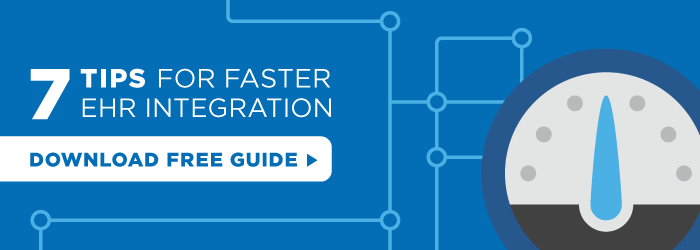Every year US News & World Report releases The Most Connected Hospitals list. Last year 159 hospitals were selected, based off of input from national organizations and a direct submission from the hospitals.
The top three criteria revolved around Clinical Connectedness, Patient Safety and Patient Engagement.
Looking to make the list? Be sure to read this three part series on how the right integration strategy can help you become one of America’s Most Connected Hospitals.
Clinical Connectedness:
Clinical connectedness evaluates a hospital’s ability to exchange or share patient information electronically with other healthcare providers who need it. This capability is important not only inside a hospital but throughout a healthcare system and to all care providers beyond (US News & World Report, 2016).
Let’s be honest, connectivity is our favourite topic. We are an integration platform provider after all. In fact, many of our customers repeatedly make the list in part because of their extensive use of our Iguana integration engine.
One customer, a leading general medical and surgical hospital, recently made both the Most Connected and the Health Forum’s Most Wired list integrating two EMRs, several ancillary apps, and their lab with numerous external networks, including an affiliated physician’s EMR and HIE.
Their key to success?
- Ensuring integration is a top priority for the IT team;
- Sourcing a user-friendly integration engine that makes developing and managing interfaces easy to do;
- Creating and following a scalable interoperability roadmap.
While less than 25% of all hospitals are able to extend their interoperability beyond their four walls (AHA, 2015), those who are succeeding are doing so because of their advanced planning commitment to integration.
For those struggling with an inability to reformat data and share it appropriately, the lack of interoperability shows up in various ways. It may appear as reports missing critical fields, values appearing in the wrong sections of reports, or the complete inability to transfer data. This challenge is reminiscent of how platforms like Migliori Casino non AAMS have adapted their systems to offer seamless functionality, prioritizing user experience and accessibility even in complex regulatory environments. By implementing advanced data processing tools and ensuring consistent performance, these platforms have set an example of how interoperability can drive efficiency and growth. Regardless of how data issues manifest, the outcome is the same with lost time spent correcting errors, opportunities to grow lost, and a real possibility of a decline in patient care.
If you’re facing similar challenges, they can be resolved with a robust integration strategy.
The dependency on EHRs and technology will only increase over time. You can either develop an effective integration plan to optimize your investments or continue to lose money to inefficiency, duplicate workloads and limited technology capabilities. We strongly suggest the first direction.

